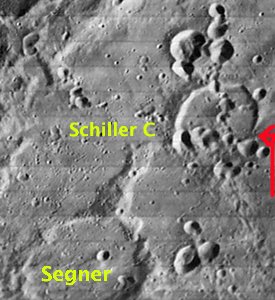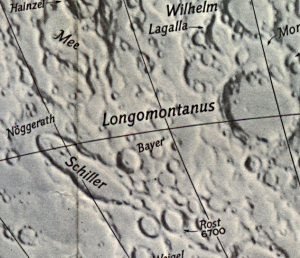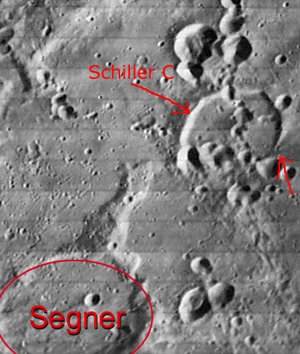
Observer: Tony Donnangelo Date/time of observation: 2002/4/24 ~04:20 UT Location of site: Hummelstown RD 3, PA, USA (40.26° N., 76.75° W.) Site Elevation: 425 feet (129 meters) Instrument: Takahashi FS-102 f/8 Magnification: 8mm Vixon LSW(102.5x), 5.2mm Pentax XL (157x) Moon was 87% illuminated. 11 days, 8 hours, 58 mins. old. Object: Crater C, southwest of Schiller. Rukl Chart #71. Lunar Light Ray s Coordinates: 56.5°S., 50°W.
There is a mountain feature which runs from near the southeast crater wall of C to the crater Segner. There is gab between this mountain feature and C. This gab is the location responsible for the lunar light ray that I observed. The ray was a thin shaft of light. It might be possible to observe the ray at an earlier time. The ray broadened quickly from when I first observed it; within 20 minutes, it was a wide swath of light with the shadow of the mountain and C visible on the surface.

